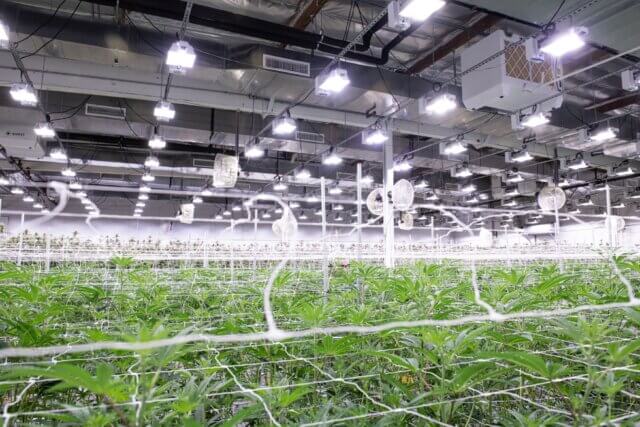As more states move to legalize cannabis, there is increasing debate over how best to approach environmental sustainability in cannabis cultivation.
In some states, the focus has been on energy consumption within indoor growing operations, leading to the enactment of flawed lighting use regulations along with a presumption that outdoor cultivation is more environmentally sound.
The reality is there is an opportunity within both indoor and outdoor cultivation to improve the environmental footprint. On one hand, individual industry stakeholders are driving more efficient growing methods through innovative products and solutions. But further progress can be made through a collective, holistic and pragmatic approach to sustainability, essentially creating a regulatory framework that applies to all methods of cannabis cultivation and is grounded in measurable and achievable baseline data.
This much-needed regulation could also serve as a conduit to helping cultivators better understand how their products and services deliver impacts aligned to the 17 United Nations Sustainable Development Goals (SDGs), either directly or indirectly. More specifically, SDGs #6 – Clean Water & Sanitation, #7 – Affordable & Clean Energy, #12 – Responsible Consumption & Production, #13 – Climate Action, #14 – Life Below Water and #15 – Life on Land, can all be impacted through an alignment of regulatory standards.
Indoor and outdoor cultivation have their place
The debate should not be between indoor or outdoor growing. That’s because there is a place for both and which method is best depends on a host of factors. These can range from local weather and farming considerations in individual states to the desired quality of the end product that ultimately is used by consumers, including medical patients.
Some regions – such as northern California – have a climate that is conducive to growing quality cannabis outdoors virtually year round. Others, like Michigan, are less than ideal. Indoor growing extends the growing season, giving all states the opportunity to realize the economic benefits of year-round locally grown cannabis. Year-round cultivation translates into more yields and greater positive economic impact. The technology supporting cannabis cultivation has real-world application in areas such as food production for parts of the world that struggle to access a stable fresh food supply.
Additionally, indoor cultivation provides control over the growing environment, which not only enhances the quality and consistency of the cannabis produced, but also reduces exposure to pesticide drift, helps abate nutrient runoff and protects the crop from other outdoor contaminants. It also helps to grow cannabis with certain cannabinoid content, terpenes and flavonoid profiles that are important for medical-grade cannabis.
Indoor growing also can be a critical policy consideration as states move to legalize cannabis. Consider this point: Some growers in the illicit market prefer to grow indoors and have been for decades. Incorporating indoor into a regulated market can discourage illicit cannabis growing and further encourage growers to create a more sustainable industry.
Estimates vary as to just how much cannabis is grown indoors compared with outdoor cultivation. Hawthorne Gardening Company estimates that about half of the total cannabis yield comes from indoor cultivation with many growers operating a mixture of indoor and outdoor growing operations.
Regardless, there is no debate that growing indoors requires energy to power grow lights, cooling systems, ventilation, irrigation and fertigation. The industry is taking steps to address energy consumption as well as overall sustainability. Remember, regulated cannabis cultivation is an emerging industry. Cannabis cultivation has moved from illegal and inefficient grows that often popped up in residential homes to more efficient, purpose-built commercial growing operations in a very short timeframe. Seinergy, a Hawthorne partner and leading energy efficiency expert that consults cannabis growers, estimates that the transition to the legal market will produce at least a 5,000 GWh savings when compared to traditional, illicit cannabis production. This is the equivalent of converting 1.5 million homes to solar power.
As the cannabis industry evolves so does the approach to cultivation. Research and development is conducted daily, and innovative growing products are launched every year. This work is being undertaken by many stakeholders, from growers who want to be as productive and profitable as possible to suppliers of cultivation inputs who are focused on creating a sustainable future for the industry. Areas where advancements are being made include:
- Lighting, particularly LED technology that is relatively new to indoor cultivation.
- Water, enhancements in purification, reclamation, reuse and precision irrigation to reduce consumption and wastewater.
- Growing media, via renewable substrate material that is effective but also compostable.
- Control systems and sensors, which can ensure lights, fans and other grow room equipment run most efficiently for the plants, environment and even local utility grid.
- Consistent sustainability standards, largely through a framework for sustainable growing in indoor and outdoor operations that can foster further environmental efficiencies.

